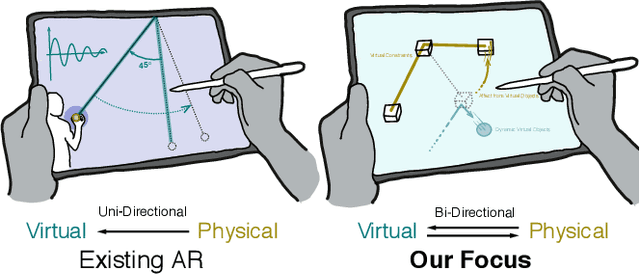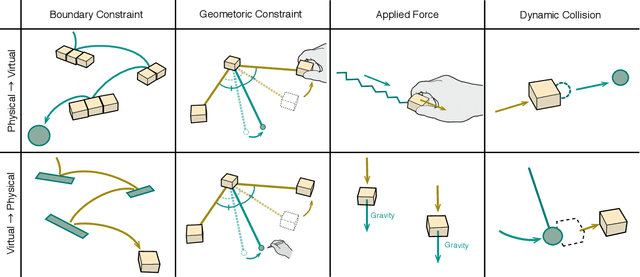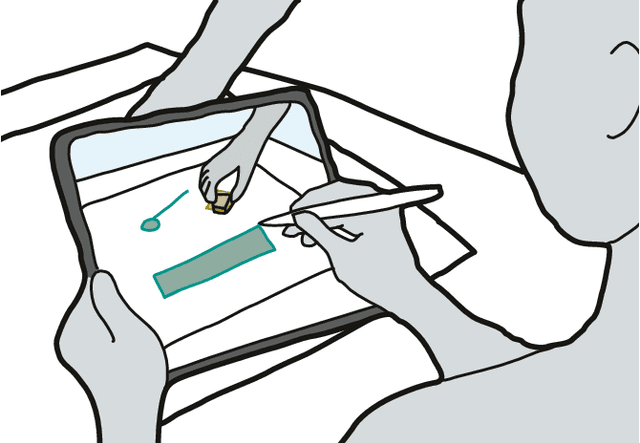Yasuaki Kakehi
Sketched Reality: Sketching Bi-Directional Interactions Between Virtual and Physical Worlds with AR and Actuated Tangible UI
Aug 12, 2022



Abstract:This paper introduces Sketched Reality, an approach that combines AR sketching and actuated tangible user interfaces (TUI) for bidirectional sketching interaction. Bi-directional sketching enables virtual sketches and physical objects to "affect" each other through physical actuation and digital computation. In the existing AR sketching, the relationship between virtual and physical worlds is only one-directional -- while physical interaction can affect virtual sketches, virtual sketches have no return effect on the physical objects or environment. In contrast, bi-directional sketching interaction allows the seamless coupling between sketches and actuated TUIs. In this paper, we employ tabletop-size small robots (Sony Toio) and an iPad-based AR sketching tool to demonstrate the concept. In our system, virtual sketches drawn and simulated on an iPad (e.g., lines, walls, pendulums, and springs) can move, actuate, collide, and constrain physical Toio robots, as if virtual sketches and the physical objects exist in the same space through seamless coupling between AR and robot motion. This paper contributes a set of novel interactions and a design space of bi-directional AR sketching. We demonstrate a series of potential applications, such as tangible physics education, explorable mechanism, tangible gaming for children, and in-situ robot programming via sketching.
LiftTiles: Constructive Building Blocks for Prototyping Room-scale Shape-changing Interfaces
Jan 08, 2020



Abstract:Large-scale shape-changing interfaces have great potential, but creating such systems requires substantial time, cost, space, and efforts, which hinders the research community to explore interactions beyond the scale of human hands. We introduce modular inflatable actuators as building blocks for prototyping room-scale shape-changing interfaces. Each actuator can change its height from 15cm to 150cm, actuated and controlled by air pressure. Each unit is low-cost (8 USD), lightweight (10 kg), compact (15 cm), and robust, making it well-suited for prototyping room-scale shape transformations. Moreover, our modular and reconfigurable design allows researchers and designers to quickly construct different geometries and to explore various applications. This paper contributes to the design and implementation of highly extendable inflatable actuators, and demonstrates a range of scenarios that can leverage this modular building block.
ShapeBots: Shape-changing Swarm Robots
Sep 08, 2019



Abstract:We introduce shape-changing swarm robots. A swarm of self-transformable robots can both individually and collectively change their configuration to display information, actuate objects, act as tangible controllers, visualize data, and provide physical affordances. ShapeBots is a concept prototype of shape-changing swarm robots. Each robot can change its shape by leveraging small linear actuators that are thin (2.5 cm) and highly extendable (up to 20cm) in both horizontal and vertical directions. The modular design of each actuator enables various shapes and geometries of self-transformation. We illustrate potential application scenarios and discuss how this type of interface opens up possibilities for the future of ubiquitous and distributed shape-changing interfaces.
 Add to Chrome
Add to Chrome Add to Firefox
Add to Firefox Add to Edge
Add to Edge